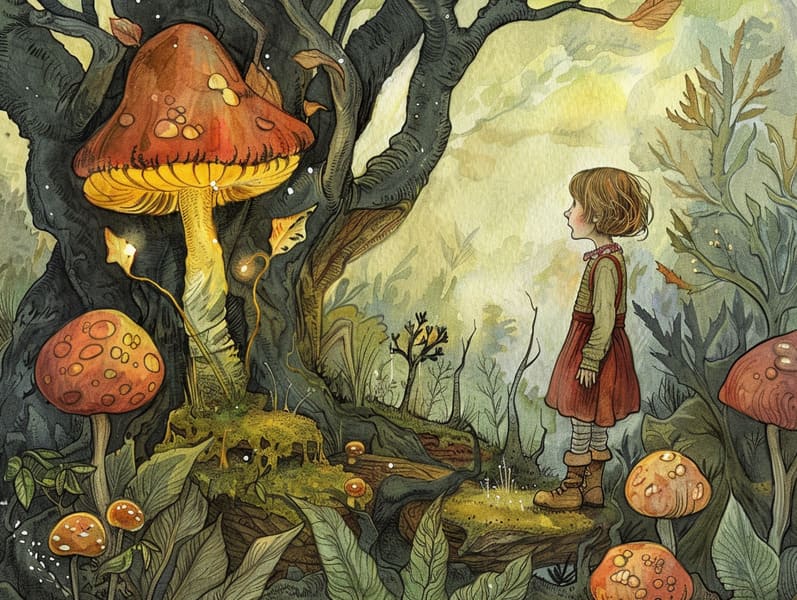The Story Behind Historical Fairy Tales and the Persistent Captivation.

Traditional fairy tales have deep roots. These tales have been conveyed from one generation to the next ages before they were ever put on paper. They sprang from a variety of civilizations, including American traditions. They were initially disseminated among elders, often carrying themes and messages mirroring the societal norms and beliefs of the time.
Jacob and Wilhelm Grimm, Jacob and Wilhelm, were among the first to assemble many of these beloved stories. Their published works, "Grimm's Story Collection," included classics like "Cinder Maid," "Hansel and Gretel," and "Little Snow White," which have since become hallmarks in the world of famous fairy tales. Similarly, Andersen's delightful stories, such as "The Mermaid's Tale," and "The Ugly Duckling," have captivated hearts worldwide, guaranteeing their place in the pantheon of iconic fairy tales.
Even though they are old, traditional fairy tales remain as significant as ever, especially as nighttime stories for kids. These whimsical stories are now available in numerous formats, including beautifully illustrated books, enchanting animations, and free fairy tales online.
Their unwavering allure can be traced to several magical reasons:
Important Morals: Traditional fairy tales often offer important moral lessons. Fairy tales like "The Shepherd Boy and the Wolf" teach the benefit of truthfulness, while "The Tale of the Tortoise and the Hare" demonstrate the virtues of steadfastness and unassuming nature. These stories offer little ones clear distinctions between ethical and unethical, building their moral compass in a tender yet important way.
Empathy and Awareness: Fairy tales frequently include protagonists facing obstacles and hardships, urging audiences to sympathize with their struggles and root for their triumphs. For instance, "Beauty and the Beast" reveals the benefit of looking past the exterior to perceive the inner being of a individual, strengthening awareness and insight.
Cultural Understanding: Many traditional fairy tales are interwoven with the cultural contexts from which they arose. Reading these stories can provide fascinating glimpses into different beliefs, encouraging a sense of world understanding and appreciation.
Fantasy and Innovation: The extraordinary elements in ancient fairy tales—magical spells—enhance children’s innovations. These stories move readers to fantasy realms, enhancing inventive ideas and a sense of astonishment that endures a lifetime.
Classic fairy tales are not only captivating but also illuminating. They act as mesmerizing tools in promoting various thinking and feeling skills in young readers. When ancient fairy tales are told out loud, they improve language development by bringing new language items and detailed sentence structures. This practice also improves listening skills and concentration, as young readers track the narrative, anxious to see what happens next.
Furthermore, analyzing the themes and characters of timeless fairy tales can foster problem-solving abilities and thinking skills. Children are educated to identify patterns, foresee events, and understand cause and effect. These examinations also ease little ones say their thoughts and feelings, fostering their emotional intelligence.
In today’s technological era, the presence of web-based fairy tales has made these narratives more accessible than ever. Internet resources and digital apps share vast collections of children's fairy tales that can be viewed or listened to anytime, anywhere. Fairy tales recited are particularly common, offering an enjoyable way for little ones to relish these whimsical stories. Audiobooks and narrated videos lead characters and settings to life, often paired with whimsical soundtracks and tunes that heighten the storytelling experience.
The timeless charm of timeless fairy tales lies in their ability to alter to contemporary times while holding onto their core values. Contemporary modernizations of these narratives often bring in more diverse characters and modern settings, making them relevant to today’s audience. However, the main ideas of spirit, goodness, and righteousness remain unchanged, continuing to touch audiences of all ages.
Old fairy tales also offer a sense of serenity and predictability. They deliver up a orderly narrative with a distinct beginning, middle, and end, more info often wrapping up with the closure of conflicts and the triumph of morality over immorality. This predictability can be easing for little ones, gifting a sense of constancy in an dynamic world.
Timeless fairy tales continue to spellbind and coach new generations, maintaining their magic and importance in modern society. As children's bedtime stories, they confer a perfect blend of fascination and comprehension, aiding moral values, empathy, and creativity. The presence of internet fairy tales and the likability of fairy tales told out loud warrant that these old stories remain within reach to new generations.
By conserving and spreading these stories, we continue to pay tribute to the rich tapestry of legends and cultural heritage. Whether you are enjoying a gorgeously illustrated book, seeing a web collection, or listening via an audio story, the loveliness of timeless fairy tales is always within reach. These narratives emphasize of the ageless spell of tales and its ability to hold us together across generations and cultures.
Be it you are browsing a colorful picture book, experiencing a virtual library, or hearing an sound book, the elegance of traditional fairy tales is always within reach.
These stories remind us of the unfading magic of stories and its ability to gather us across epochs and places, casting a charm that delights and instructs alike.